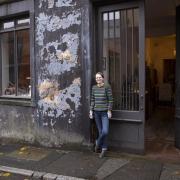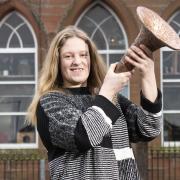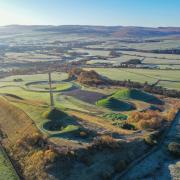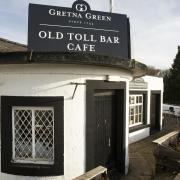From the farm he built for his family and the tavern he frequented, to the house where he spent his final days and the kirkyard where he was buried, the presence of Scotland’s bard, Robert Burns, can be felt everywhere around Dumfries.
As the poet’s birthday is celebrated the world over on January 25, Dumfries remains at the heart of all things Burns.
Although it has changed radically since Burns lived there in the late 1700s, Dumfries is still our region’s busy capital with a wealth of shops, cafes and restaurants and attractions including the town’s Museum and Camera Obscura, Gracefield Arts Centre, Moat Brae Centre for Children’s Literature and the Aviation Museum.
And the area’s fascinating Burns-related attractions pull in thousands of visitors every year to walk in the footsteps of one of the world’s greatest literary figures.

Ellisland Farm is where Burns first settled in the area, building it for his family in 1788. Inspired by the beautiful surroundings on the banks of the River Nith between Dumfries and Auldgirth, it was here he penned some of his most famous work, including Auld Lang Syne and Tam O’ Shanter.
Today, visitors can soak up the atmosphere in the Burns’ family farmhouse, explore the old steading and enjoy a walk and a picnic by the river.
Robert Burns Ellisland Trust was established in 2020 to care for and promote Ellisland for the benefit of the nation. The trust welcomes groups and organises events throughout the year.
Guests can even book an overnight stay to gain their own poetic inspiration at Ellisland’s newly refurbished Auld Acquaintance Cottage, www.ellislandfarm.co.uk
A beautiful riverside walk from the farm leads to Friars Carse, now a hotel but in Burns’ time home of Captain Robert Riddell, a great admirer of the poet. He gave Burns keys to his summer cottage, a folly called The Hermitage, which he used as a writing retreat.
To boost a meagre living made on the farm, Burns took a job as an exciseman and eventually gave up Ellisland altogether, moving into town, at first to a house in the ‘Wee Vennel’ (now Bank Street) and later, in May 1793, to what is now known as Robert Burns House. Here visitors can spend time in the atmospheric kitchen, bed chamber and writing room and view artefacts associated with the poet during his time in Dumfries, www.dgculture.co.uk/venue/robert-burns-house

During his years living in the town, Burns was known to have been involved in the construction of The Theatre Royal in Shakespeare Street which now holds the honour of being Scotland’s oldest working theatre. Burns wrote several pieces for the stage including A Scots Prologue, which was performed as a fundraiser for the new theatre and The Rights of Women for a performance in the newly opened theatre in 1792, www.theatreroyaldumfries.co.uk
Burns also spent many an evening at The Globe Inn - his favourite ‘howff’ - sometimes lodging overnight. The Burns Rooms at The Globe house several authentic artefacts including the poet’s chair, and visitors can see verses he etched onto the window panes of his bed chamber.
The Globe was bought by David Thomson and Teresa Church in 2018, primarily to preserve the Burns Rooms. They invested heavily in a sympathetic restoration of the property, which is now a fine dining restaurant. www. globeinndumfries.co.uk
Robert Burns died in Dumfries in 1796, aged just 37. Originally buried in a modest grave, an impressive mausoleum was built for him at the eastern end of St Michael’s kirkyard, to which his remains were moved in 1815.

Here he now lies with his widow Jean Armour – whose 2004 statue keeps a watchful eye over the kirkyard from Brooms Road - and five of their children. The mausoleum gates can be opened for visitors to Burns House.
Another “must see” for Burns pilgrims to Dumfries is the Burns Statue which was unveiled in 1882, having been commissioned by Dumfries Town Council in 1877. Sculpted by Amelia Paton Hill and carved in Carrara marble, this distinctive landmark was restored in 2005.

For an overview of Burns’ life in and around Dumfries, a visit to the town’s Robert Burns Centre is a must.
The picturesque former 18th century watermill on the west bank of the Nith houses a fascinating collection of nationally significant artefacts, a 3D landscape model of how the town would have been in Burns’ time and an audio booth offering the chance to listen to contemporary performances of the poet’s songs and poems, www.dgculture.co.uk/ venue/robert-burns-centre
The mill also incorporates the Robert Burns Centre Film Theatre, a popular independent cinema, www.rbcfilmtheatre.co.uk
A Town Centre Trail leaflet is available from Visit Scotland on Whitesands and is the perfect way to walk in the footsteps of the bard, exploring all the town’s Burns attractions, in preparation for your own Burns Night celebrations




























